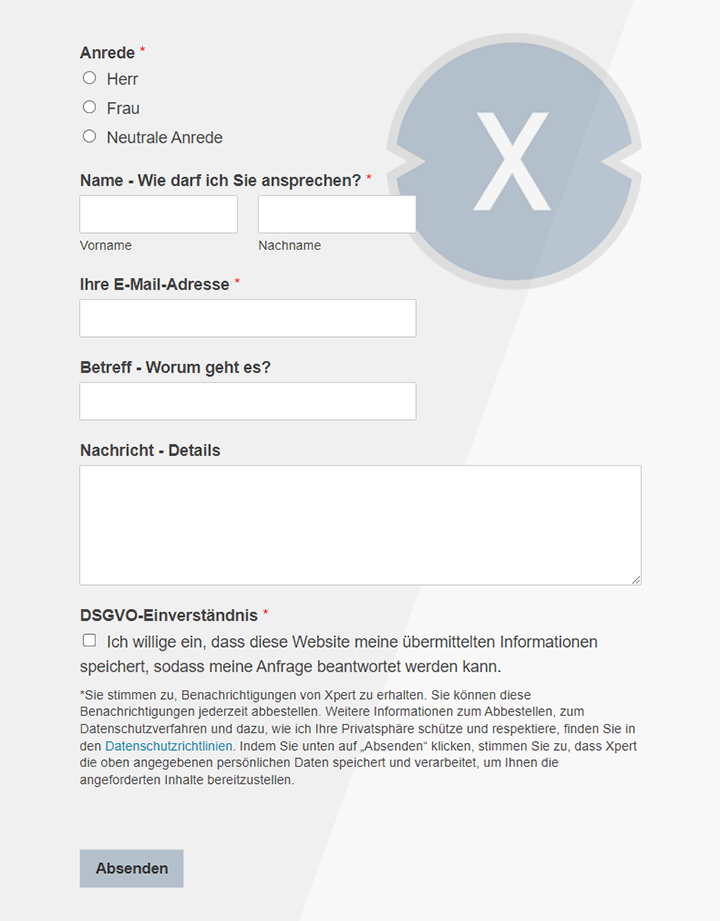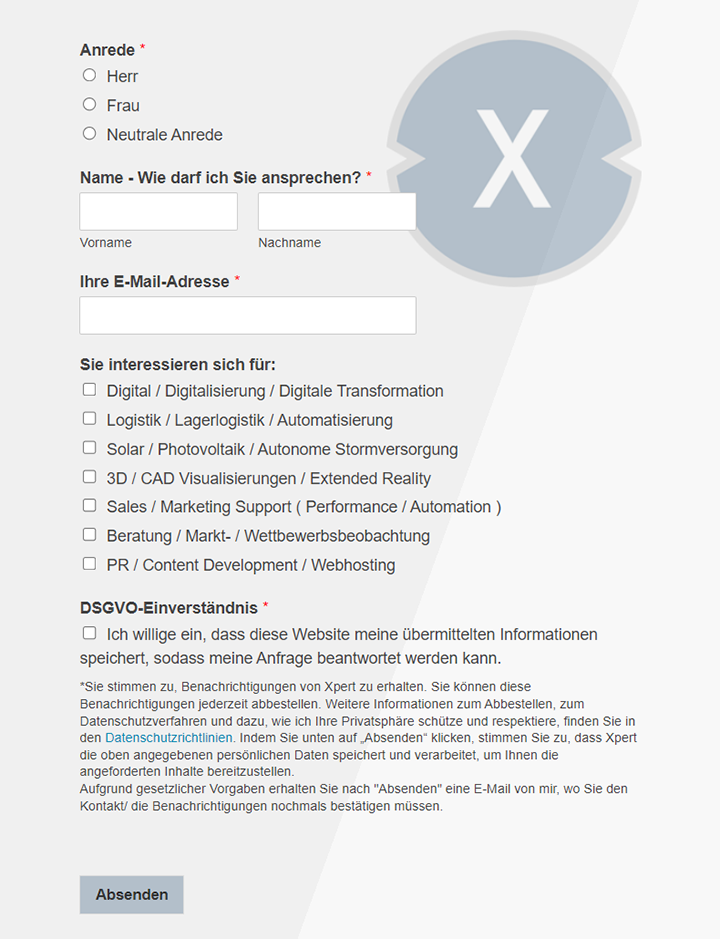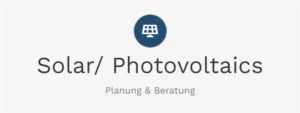The chaos on the screen and the fight for attention: too many streaming services? Why the selection is difficult
Xpert pre-release
Language selection 📢
Published on: May 4, 2025 / update from: May 4, 2025 - Author: Konrad Wolfenstein

The chaos on the screen and the fight for attention: too many streaming services? Why the selection is difficult - picture: Xpert.digital
Why prompt engineers disappear faster than they came
The fragmentation of the television and streaming market: a comprehensive analysis
The increasing fragmentation of the media market, especially in the television and streaming area, is a central phenomenon of the current media landscape. Consumers today have more options than ever, while media companies are faced with the challenge of reaching their target groups through increasingly diverse platforms. The following report analyzes the current situation, causes and effects of this development.
Suitable for:
Definition and causes of fragmentation in the media market
The fragmentation of the media market describes progressive splitting and diversification of the media landscape into many segments that exist in parallel. This development is not new, but has accelerated considerably through digitization.
"The fragmentation of the media and entertainment industry has an enormous impact on media consumption," says Adobe in his analysis. One of the most important consequences is a significant “shift in power from the companies in the media and entertainment industry” towards the consumers who “decide for themselves what content they want to consume when and where”.
This development is promoted by several factors:
Digitization and technological progress
Digitization has drastically reduced the production and distribution costs for media content and reduced the barriers for the market entry of new providers. At the same time, new technologies enable time and location-independent media consumption.
Multiplication of the offer
The number of available TV stations and streaming services is growing continuously. While in the past only a handful of television stations existed, dozens of linear programs and numerous streaming platforms are available today.
Mobility and flexibility of use
Mobile end devices can be used to consume media content anywhere and at any time. "In fact, Adobe Digital Insights shows that consumers are increasingly watching TV outside of their living room. And this trend is getting stronger".
The current situation of the television market in Germany
The German television market shows increasing fragmentation, although the large public broadcasters continue to dominate.
Market shares of the television channels
In 2024, ZDF reached the highest value since 1994 with a market share of 15.3 percent. The first (ARD) followed 13.0 percent. RTL leads with 8.1 percent for private broadcasters, while Vox and Sat.1 follow.
In the advertising-relevant target group of 14- to 49-year-olds, the distribution looks different: RTL reached the highest market share here with over ten percent, followed by ARD with 9.4 percent.
The current market shares illustrate a long -term trend: While the big broadcasters are still leading, many of them have lost significantly in market shares in the past 20 years:
- The first lost more than two percentage points
- RTL even lost seven percentage points
- Sat.1 and ProSieben lost at least five percentage points
Linear television decline
The ARD/ZDF media study 2024 shows a significant decline in linear television use. The daily reach of the linear television program fell to 58 percent in the overall target group by 6 percentage points. This trend is particularly pronounced by younger viewers:
- For the 14 to 29 year olds, only about every fourth (24%) looks linear television daily (decline by 10 percentage points)
- In the age group 30 to 49 years, the daily reach fell by 10 percentage points to 43 percent
A Nielsen study confirms this trend and concludes that the use of streaming services in Germany in 2024 was higher than that of linear television.
Suitable for:
- Opportunities and challenges for children and young people: The growing influence of AI, metaverse and digital twins in media use
The growing streaming market in Germany
The streaming market in Germany has considerable growth. According to Statista, sales in the video-on-demand market for 2024 will be estimated at around 5.96 billion euros, which corresponds to an increase of around 10.4% compared to the previous year.
Market shares of streaming services
Two large providers are currently dominating in the German streaming market:
- Amazon Prime Video lies ahead of Netflix with a lead of about 2 percent
- Disney+ follows at a clear distance and lies 12 percent ahead of Apple TV+ and WOW
In the case of newly completed streaming subscriptions in the third quarter of 2024, Amazon Prime Video recorded the largest market share with around 17 percent, followed by Disney Plus and Netflix with around 14 percent each.
Growth and user numbers
The number of streaming video-on-demand subscribers in Germany has increased significantly in recent years:
- From 15.0 million in 2019 to 21.1 million in 2023 (increase of over 40 percent)
- Another growth is expected for 2024
- Statista predicts that the number of video streaming users in Germany will increase to 41.8 million by 2027
According to Nielsen, 77% of Germans use video streaming services weekly, which corresponds to an increase of 7 percentage points compared to the previous year and 13 percentage points in the past three years.
Streaming use varies greatly according to age groups:
- 92% of 18-34 years of age use streaming services weekly
- The largest annual increase in the age group of 35- to 54-year-olds is recorded, with an increase of 10 percentage points to 83%
- Also with the 55- to 69-year-olds, an increase of 8 percentage points can be observed compared to the previous year
🎯🎯🎯 Benefit from Xpert.Digital's extensive, fivefold expertise in a comprehensive service package | R&D, XR, PR & SEM

AI & XR 3D Rendering Machine: Fivefold expertise from Xpert.Digital in a comprehensive service package, R&D XR, PR & SEM - Image: Xpert.Digital
Xpert.Digital has in-depth knowledge of various industries. This allows us to develop tailor-made strategies that are tailored precisely to the requirements and challenges of your specific market segment. By continually analyzing market trends and following industry developments, we can act with foresight and offer innovative solutions. Through the combination of experience and knowledge, we generate added value and give our customers a decisive competitive advantage.
More about it here:
Endless streaming selection: How users and providers are reoriented
Influence factors on the streaming market
An important influencing factor on the German streaming market was the elimination of the additional cost privilege in July 2024, which ended the practice, automatically billing costs for cable connections via the rental costs. Many households faced the decision to conclude their own contract or use alternative offers, which caused the subscriptions to streaming services significantly increase.
Effects on consumer behavior
The fragmentation of the media market has profound effects on the behavior of consumers.
Changed usage habits
The ARD/ZDF media study 2024 shows that the fragmentation of media use continues in 2024, with the daily extension and usage duration of all media genres decrease slightly. The decline in linear media is particularly clear, while non-linear offers remain relatively stable or even grow.
Change is particularly pronounced among younger users:
- In the target group of 14- to 29-year-olds, the daily reach of music streaming services (54%) is already higher in the third JHR in a row than that of the classic radio (37%)
- The age group from 30 to 49 years shows the greatest increase in the use of music streaming services, from 17% to 27%
Challenges for users
The fragmentation not only brings advantages, but also challenges for consumers:
"The main problem from a user perspective is fragmentation on the market. If you want to stream, you often have to invest a lot of time to find content that you like," said Michael Schmid in an interview with Wirtschaftswoche.
This leads to a higher bounce rate for streaming services: "Three out of four streaming users have terminated at least one of their subscriptions last year [...]. Around half even quit two or more streaming subscriptions".
Overlaps and stable usage patterns
Despite the fragmentation, stable usage patterns also develop:
"However, the acceptance of a pronounced fragmentation of the audience should also be checked critically. This shows significant overlap shares between different media and media offers and thus in turn together".
"In addition, consumers form stable usage routines, which are similar for large groups of consumers and are probably only slowly changing".
Suitable for:
Challenges for media companies and advertisers
The increasing fragmentation presents media companies and advertisers with complex challenges.
Monetarization and advertising revenue
"This shift in power meets the media companies at an extremely wound point - the advertising revenue. Monetarization can become a challenge if your own content has to be provided on all platforms and channels used by your target group".
The fragmentation makes it difficult to achieve large ranges, which puts the traditional advertising model under pressure. At the same time, it offers the opportunity for more targeted advertising on specific target groups.
Measurement and analysis of media use
"The fragmentation of the media is stronger than ever, and the agencies are looking for uniform instruments for measuring and achieving fragmented target groups".
New measurement and analysis tools such as Nielsen One are developed to:
- Cross -media measurement for agencies to standardize
- To achieve higher reach
- To predict future audience trends
Strategies for a fragmented media landscape
Adobe recommends six measures to be successful in the fragmented media landscape:
- "A strategy for channel or devices is more important than ever."
- "Enter, consolidate and manage online and offline target group data."
- "Provide personalized experiences at all touchpoints at the right time."
- "Manage the Customer Journey, starting with anonymous interested parties to the loyal advocate."
- "Older measuring tools do not record the viewers on all touchpoints. And what is not recorded cannot be used."
- "Earn customer loyalty through excellent content and experiences."
Suitable for:
Social and political implications
The fragmentation of the media landscape also has social and political effects.
"The fragmentation of the audience means a special challenge for the political system because its existence is dependent on a certain basic social consensus".
The increasing distribution of specialized content and the formation of separate sub -public can lead to “balkanization” of the public discussion, in which joint reference points are lost.
"In order to prevent the drifting apart of the crowd fragments, the political system must therefore use increased communication management, which tries to actively influence the mediation of politics and socially relevant topics".
Outlook and future developments
The fragmentation of the media market will probably continue in the coming years, albeit with some differentiating aspects.
Continuation of the trend towards non-linearity
"Due to the falling use of the linear media, it can be assumed that the media landscape will continue to fragment in the future. This development means that the attention of users is distributed to many different channels".
Continue to existing linear media
Despite the fragmentation, linear media remain relevant: "Even if the use of the classic linear media is steadily decreasing, both the linear television program and the classic radio are still by far the most used offers within your genera".
“Despite the medial oversupply and the further progressive fragmentation, still stately usage shares can still be recorded for classic linear TV.
Opportunities through personalization
Fragmentation also offers opportunities: "fragmentation makes marketing more complex and not easier. The great opportunity: to get closer and better to the target groups".
The increasing personalization of content and advertising enables a more precise address of target groups and can lead to greater relevance and commitment.
Data driven and flexible: media innovation in the age of the variety of platforms
The fragmentation of the television and streaming market is a multi-layered phenomenon with far-reaching effects on consumers, media companies and society as a whole. It offers consumers more selection and flexibility, but presents media companies with the challenge of monetizing their content across many platforms and achieving their target groups.
The trend towards fragmentation is expected to continue, whereby non-linear media will continue to become more important. At the same time, linear media will play an important role, especially for older target groups and events with a broad social relevance.
For media companies, the future lies in cross-media strategies that include both linear and non-linear offers and are tailored to the specific needs of different target groups. Success will increasingly depend on how well you are able to use data to offer personalized experiences across all platforms and at the same time manage the fragmentation of your audience.
We are there for you - advice - planning - implementation - project management
☑️ SME support in strategy, consulting, planning and implementation
☑️ Creation or realignment of the digital strategy and digitalization
☑️ Expansion and optimization of international sales processes
☑️ Global & Digital B2B trading platforms
☑️ Pioneer Business Development
I would be happy to serve as your personal advisor.
You can contact me by filling out the contact form below or simply call me on +49 89 89 674 804 (Munich) .
I'm looking forward to our joint project.
Xpert.Digital - Konrad Wolfenstein
Xpert.Digital is a hub for industry with a focus on digitalization, mechanical engineering, logistics/intralogistics and photovoltaics.
With our 360° business development solution, we support well-known companies from new business to after sales.
Market intelligence, smarketing, marketing automation, content development, PR, mail campaigns, personalized social media and lead nurturing are part of our digital tools.
You can find out more at: www.xpert.digital - www.xpert.solar - www.xpert.plus





















